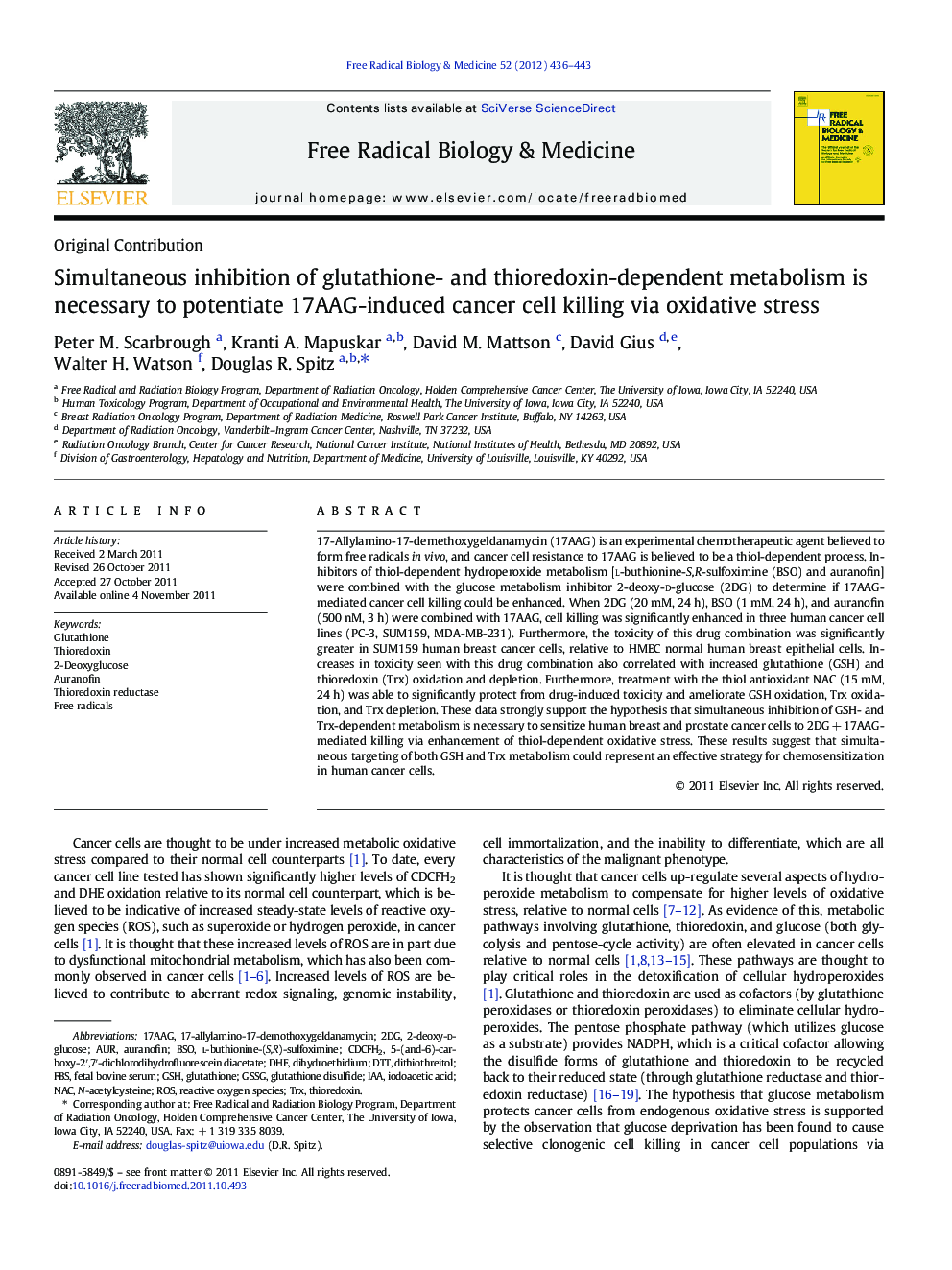| Article ID | Journal | Published Year | Pages | File Type |
|---|---|---|---|---|
| 1908945 | Free Radical Biology and Medicine | 2012 | 8 Pages |
17-Allylamino-17-demethoxygeldanamycin (17AAG) is an experimental chemotherapeutic agent believed to form free radicals in vivo, and cancer cell resistance to 17AAG is believed to be a thiol-dependent process. Inhibitors of thiol-dependent hydroperoxide metabolism [l-buthionine-S,R-sulfoximine (BSO) and auranofin] were combined with the glucose metabolism inhibitor 2-deoxy-d-glucose (2DG) to determine if 17AAG-mediated cancer cell killing could be enhanced. When 2DG (20 mM, 24 h), BSO (1 mM, 24 h), and auranofin (500 nM, 3 h) were combined with 17AAG, cell killing was significantly enhanced in three human cancer cell lines (PC-3, SUM159, MDA-MB-231). Furthermore, the toxicity of this drug combination was significantly greater in SUM159 human breast cancer cells, relative to HMEC normal human breast epithelial cells. Increases in toxicity seen with this drug combination also correlated with increased glutathione (GSH) and thioredoxin (Trx) oxidation and depletion. Furthermore, treatment with the thiol antioxidant NAC (15 mM, 24 h) was able to significantly protect from drug-induced toxicity and ameliorate GSH oxidation, Trx oxidation, and Trx depletion. These data strongly support the hypothesis that simultaneous inhibition of GSH- and Trx-dependent metabolism is necessary to sensitize human breast and prostate cancer cells to 2DG + 17AAG-mediated killing via enhancement of thiol-dependent oxidative stress. These results suggest that simultaneous targeting of both GSH and Trx metabolism could represent an effective strategy for chemosensitization in human cancer cells.
Graphical abstractSimultaneous inhibition of glutathione- and thioredoxin-dependent metabolism is necessary to potentiate 17AAG-induced cancer cell killing via oxidative stress.Figure optionsDownload full-size imageDownload high-quality image (118 K)Download as PowerPoint slideHighlights► Simultaneous inhibition of glutathione (GSH) and thioredoxin (TRX) sensitizes cancer cells to chemotherapy. ► Increased chemo-sensitization with inhibitors of GSH and Trx causes increased oxidative stress. ► Increased chemo-sensitization is causally related to increased oxidative stress. ► Simultaneous inhibition of GSH and Trx could be an effective strategy for chemosensitization.
